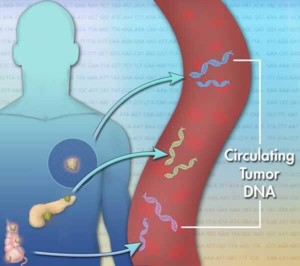Tyler Ford
08/29/2019

If you follow Mammoth on Twitter (and you should!), you may have noticed that we create threads summarizing cool research papers a few times a week. We call these threads #MammothDigests. They cover the key findings in papers on topics such as CRISPR, precision medicine, diagnostics, cancer, agriculture, and microbiology. You can find a few of our favorite #MammothDigests below, but be sure to check us out on Twitter for more!
Using CRISPR to control the properties of hydrogels
Researchers from the @wyssinstitute recently demonstrated that it’s possible to use #CRISPR nuclease Cas12a to control the properties of hydrogels.

These hydrogels have ssDNA structural components. When Cas12a cleaves a dsDNA target (as directed by a guide RNA), its collateral ssDNA cutting ability is activated. By cutting the ssDNA in the hydrogels, activated Cas12a changes their structural properties.
The authors show that activated Cas12a can cause gels to release attached/encapsulated chemicals, enzymes, and cells. Altering gel structures can also change the properties of associated electrical circuits. This can result in electrical readouts indicative of target dsDNA.
Devices incorporating these programmable CRISPR-responsive gels could be used for #MolecularDiagnostics, therapeutic delivery, and more!
Detecting circulating tumor DNA for effective cancer treatment
Recent work from the @MayoClinic and @uiowa shows how the detection of mutations in circulating tumor DNA (ctDNA) can lead to effective #cancer treatment.

In this particular case, the authors identified amplification of a gene called ERBB2 in a 71 yr old patient with cholangiocarcinoma (a type of liver cancer). This gene encodes a tyrosine kinase receptor. Antibodies against this receptor are already approved for other cancers.
Doctors treated the patient with antibodies targeting the receptor and the patient responded well over 12 months! Tissue sampling would have been challenging in this patient – diagnosing the ERBB2 amplification from ctDNA was essential.
The authors point out that similar diagnostic tools could be very useful for other patients and diseases. We hope to see effective use of similar #molecularDiagnostic techniques in the future!
Precision medicine for HIV treatment

Here’s a great new paper showing how a #precisionMedicine may be effective at fighting #HIV/AIDs. *Note* This work was in mice.
In this work, researchers used modified immune cells called “CAR-T” cells to attack HIV-infected cells. Doctors have already used CAR-T cells to effectively treat some forms of #cancer. Yet CAR-T cells have had difficulty persistently killing HIV-infected cells.
These researchers improved upon old designs of HIV-targeting CAR-T cells. They made it so the CAR-T cells could grab onto 2 parts of HIV at once. Previous HIV-targeting CAR-T cells could only grab onto 1 part of HIV.
These new and improved “duoCAR-T” cells effectively killed HIV-infected cells in mice. They also kept infection levels low over 30 days and were resistant to HIV infection themselves!
This work was only in mice, but CAR-T therapies are effective at treating some human cancers. Hopefully we’ll see CAR-T cells effectively fighting HIV in human patients soon!
Final note – these researchers didn’t use #CRISPR to create their CAR-T cells. Yet CRISPR and #genomeediting can make the CAR-T cell production process much easier and potentially more effective :D.
